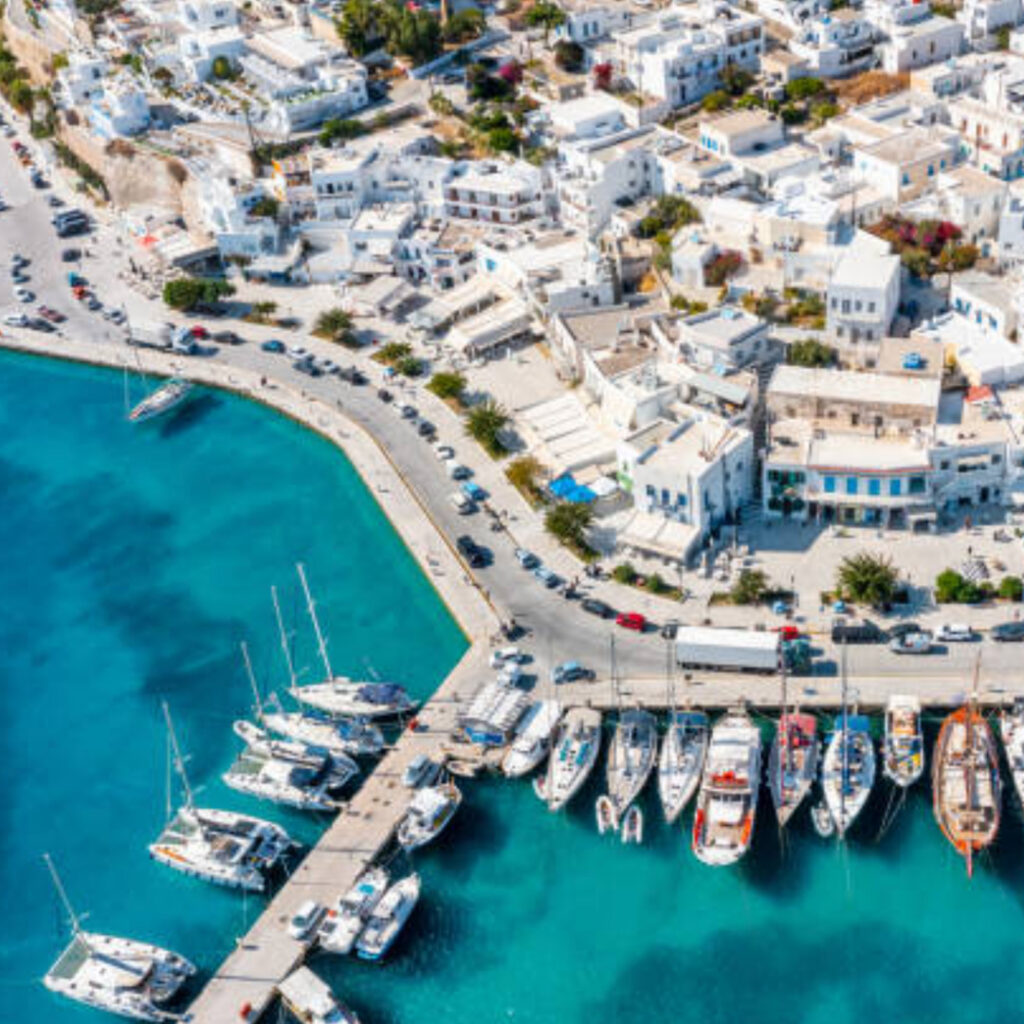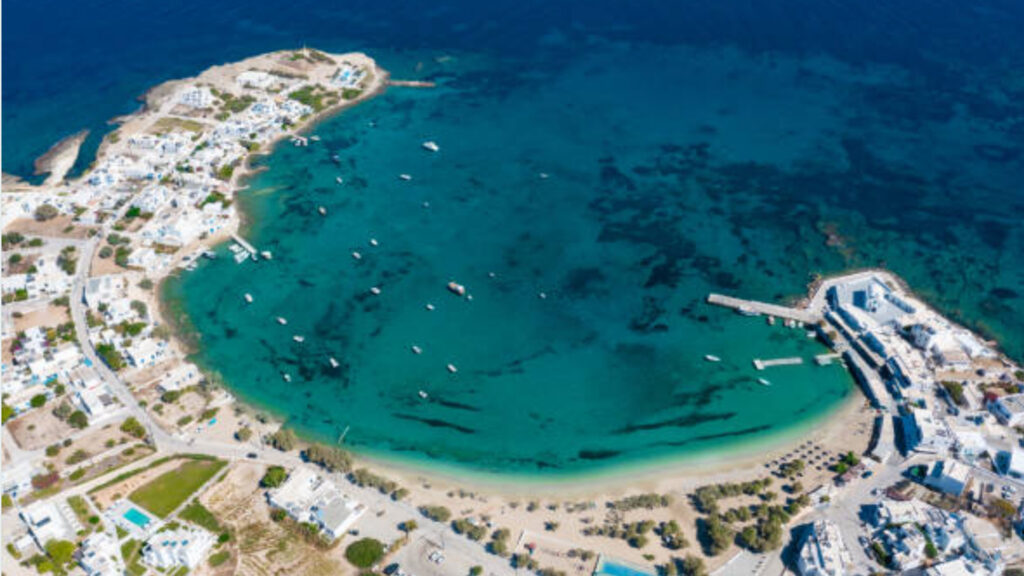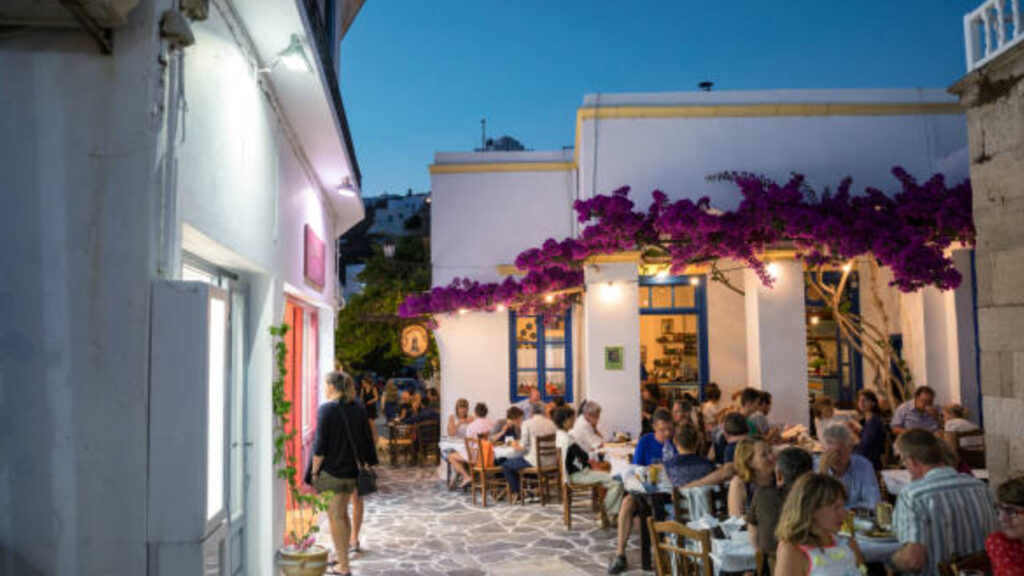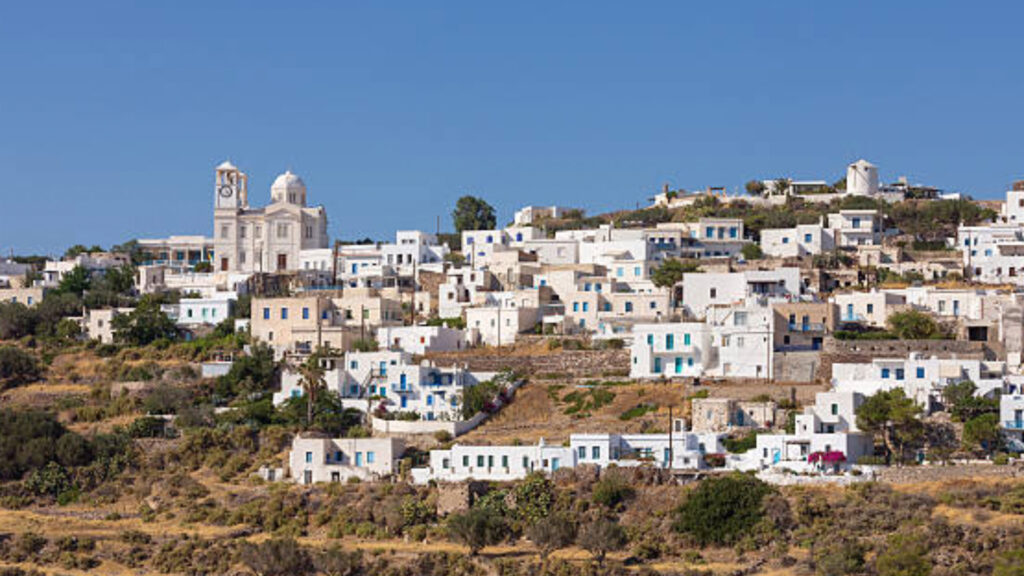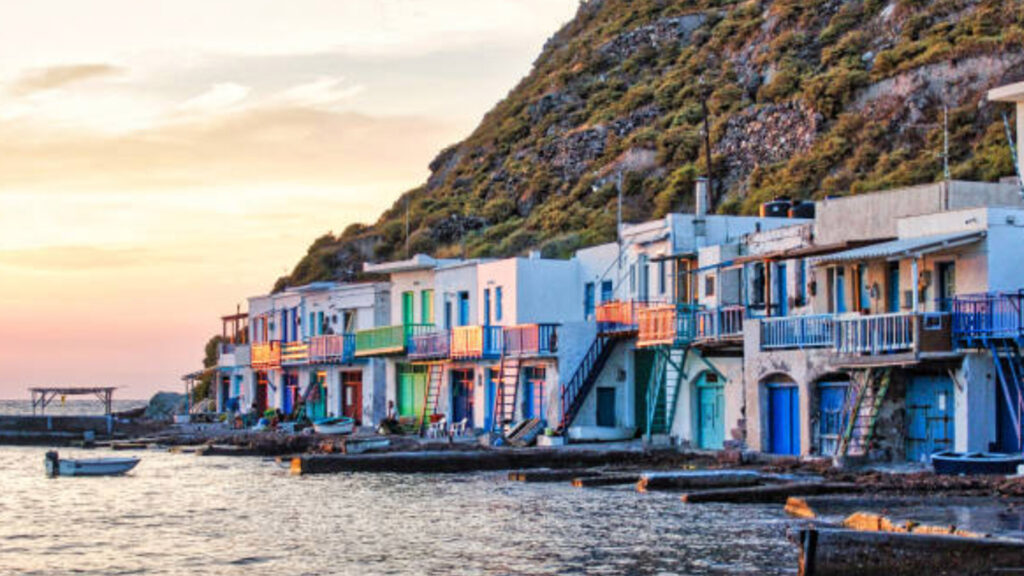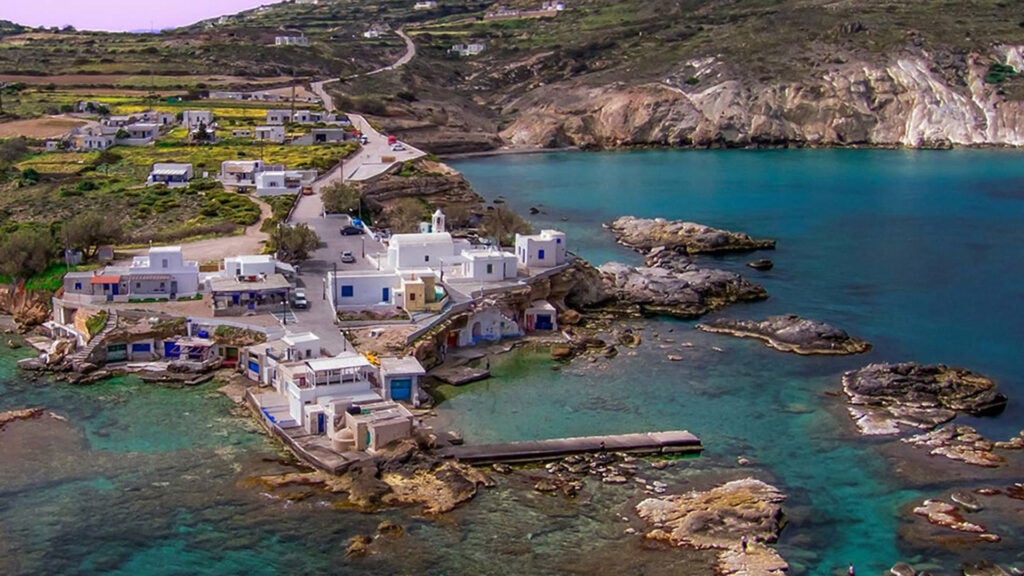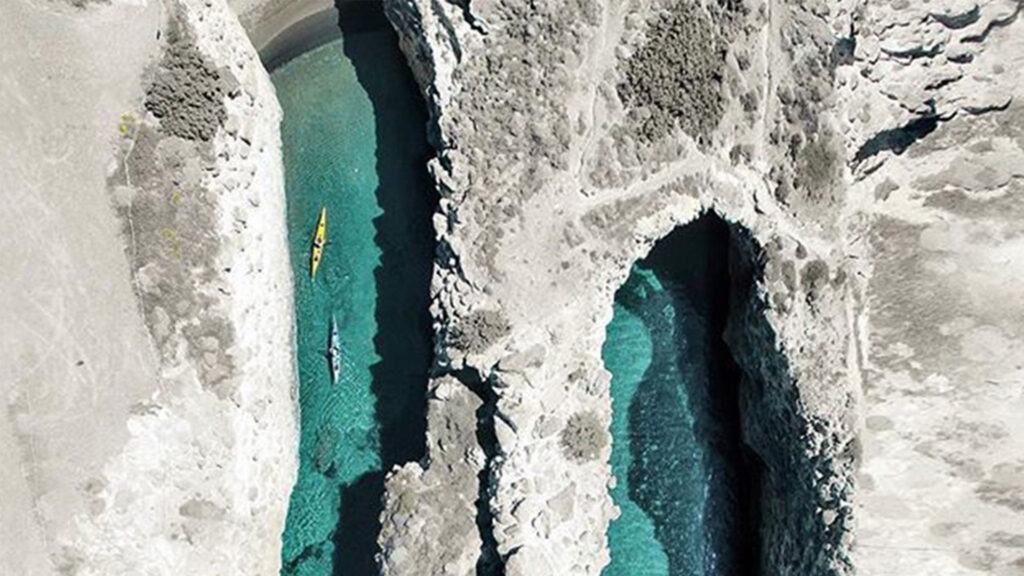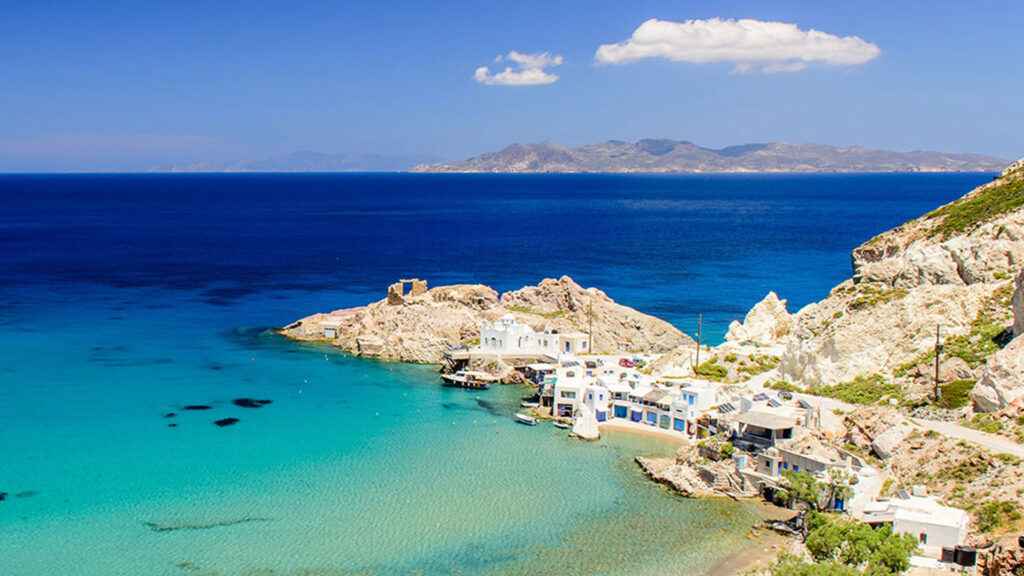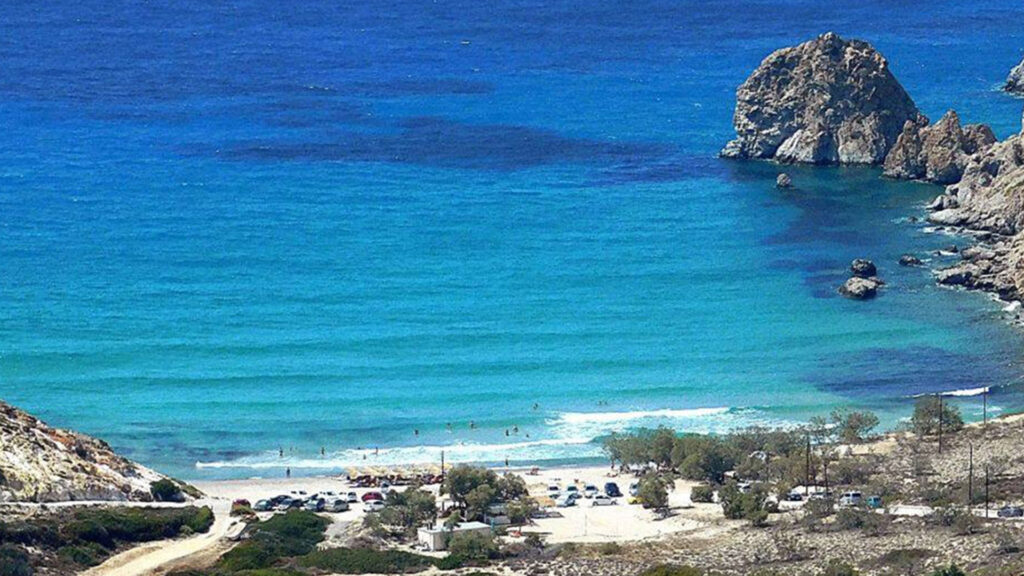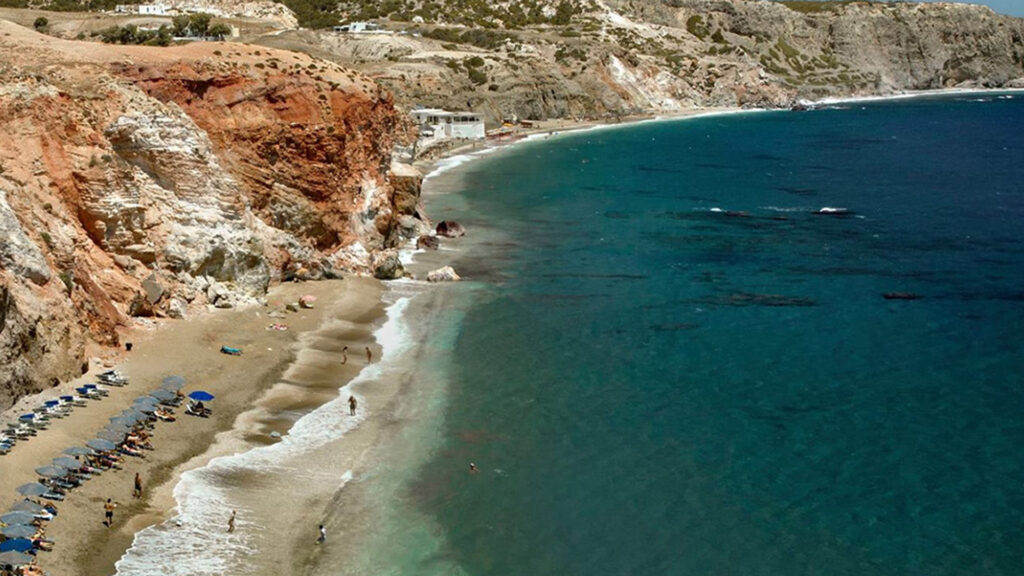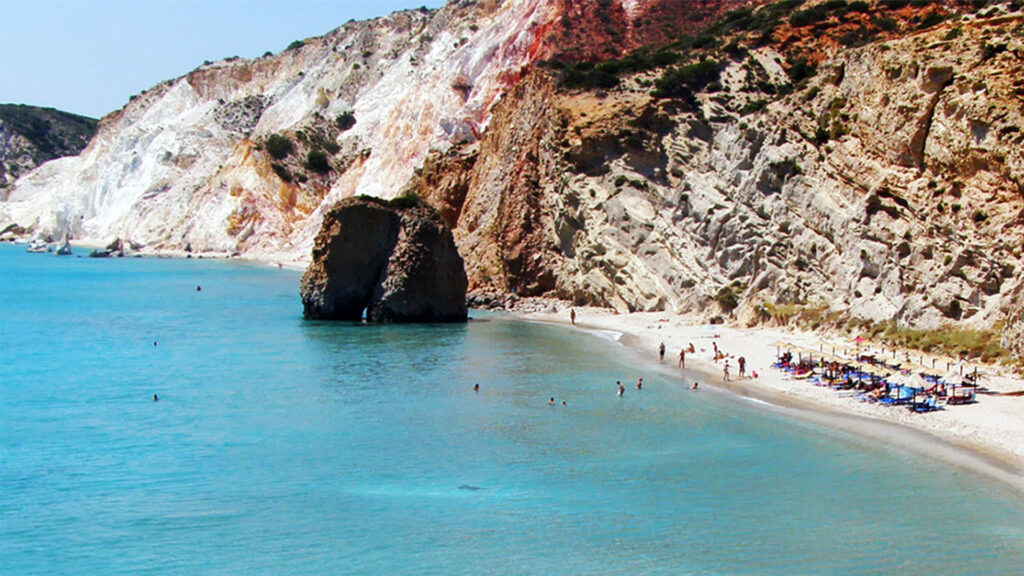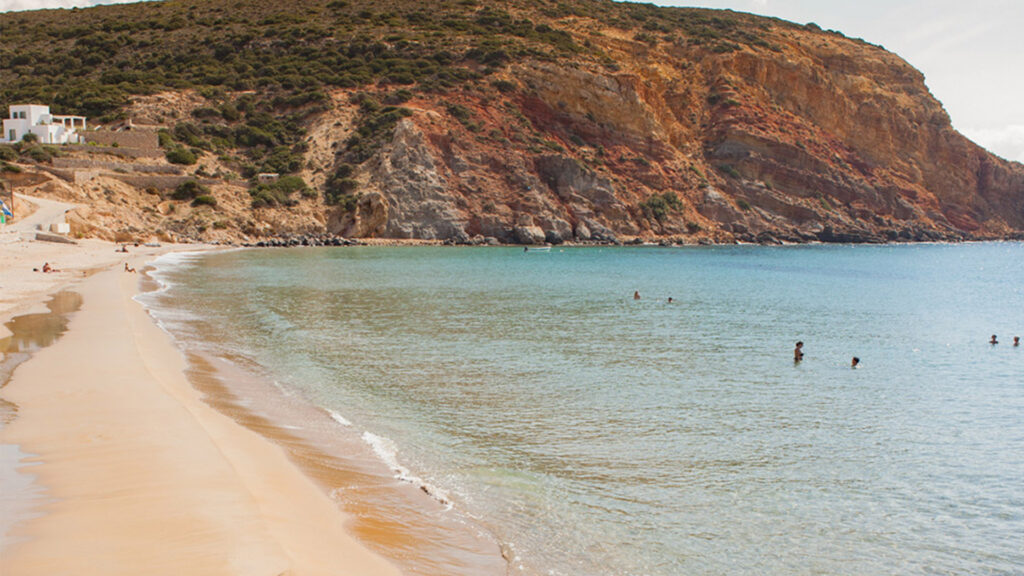Adamas is the main port of Milos, as well as one of its largest settlements, with over 1300 permanent inhabitants. It is located on the northeast side of Milos Bay and lies 5 km away from Plaka, which is the capital town.
Strolling around the stone-paved alleys of Adamas, visitors will come across many shops, restaurants, cafes and bars. Many services, such as banks, agencies and supermarkets have their base in the village, so guests will find everything they might need during vacation.
Visiting the Mining Museum to find out more about interesting aspects of the local geology is highly recommended. As the island was formed due to volcanic activity, the minerals and materials present create a unique landscape.
Furthermore, boat trips and cruises starting from the port will take participants to secluded beaches and other interesting places, all around the island, including the caves of Kleftiko, an old pirate lair.
